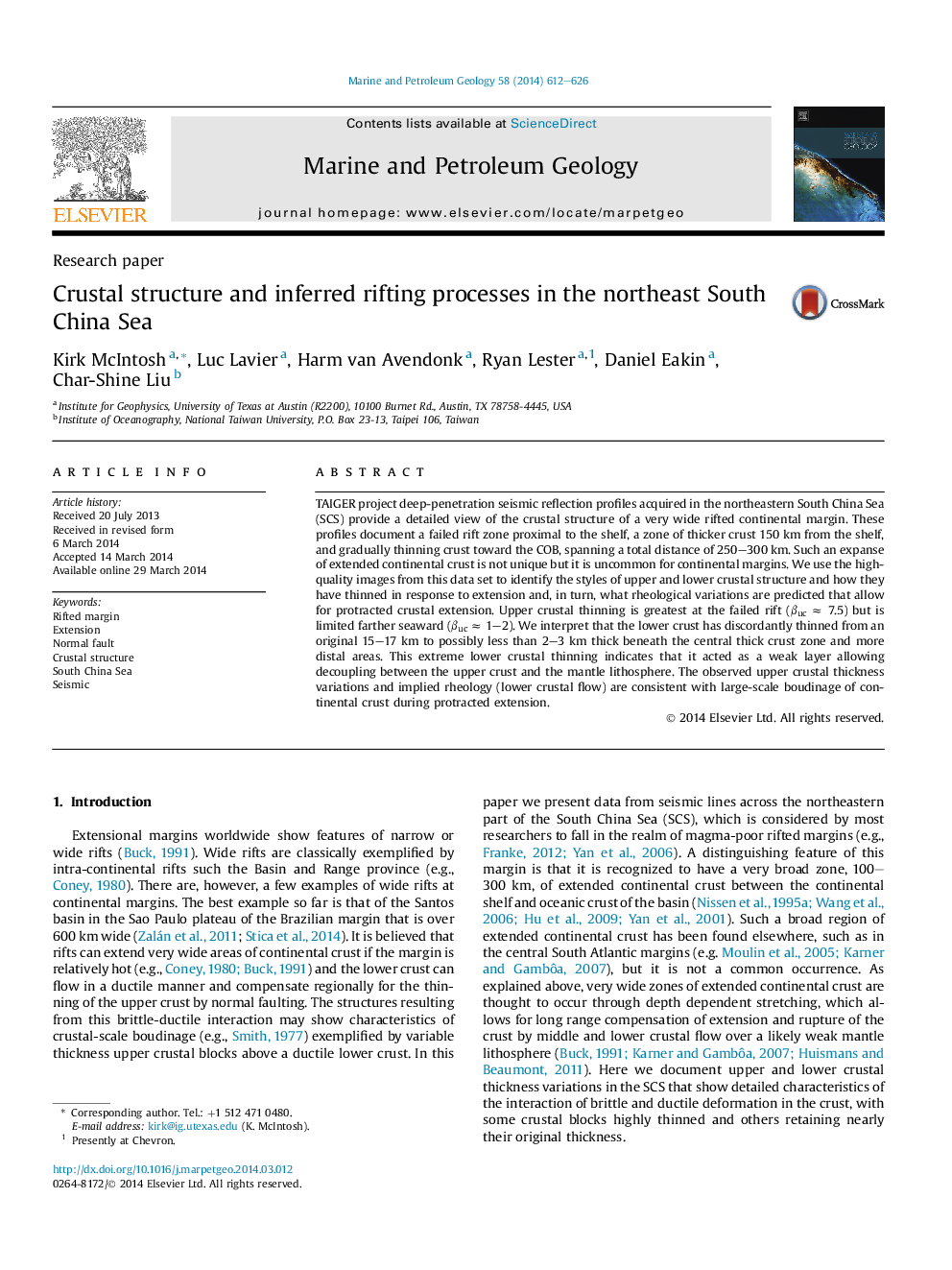| Article ID | Journal | Published Year | Pages | File Type |
|---|---|---|---|---|
| 4695590 | Marine and Petroleum Geology | 2014 | 15 Pages |
•The South China Sea is a “wide rift” that has progressed to oceanic breakup.•Seismic images show rift-related variation in upper and lower crust thinning.•Upper crustal thinning varies from negligible to β ≈ 7.5 across the extended margin.•Lower crust appears highly thinned everywhere suggesting flow of this layer.•Lower crustal rheology and temperature allowed crustal boudinage formation.
TAIGER project deep-penetration seismic reflection profiles acquired in the northeastern South China Sea (SCS) provide a detailed view of the crustal structure of a very wide rifted continental margin. These profiles document a failed rift zone proximal to the shelf, a zone of thicker crust 150 km from the shelf, and gradually thinning crust toward the COB, spanning a total distance of 250–300 km. Such an expanse of extended continental crust is not unique but it is uncommon for continental margins. We use the high-quality images from this data set to identify the styles of upper and lower crustal structure and how they have thinned in response to extension and, in turn, what rheological variations are predicted that allow for protracted crustal extension. Upper crustal thinning is greatest at the failed rift (βuc ≈ 7.5) but is limited farther seaward (βuc ≈ 1–2). We interpret that the lower crust has discordantly thinned from an original 15–17 km to possibly less than 2–3 km thick beneath the central thick crust zone and more distal areas. This extreme lower crustal thinning indicates that it acted as a weak layer allowing decoupling between the upper crust and the mantle lithosphere. The observed upper crustal thickness variations and implied rheology (lower crustal flow) are consistent with large-scale boudinage of continental crust during protracted extension.
